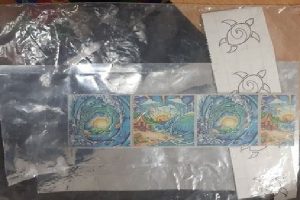The banana, the most popular fruit in the U.S., is being threatened by a disease to which it was assumed to be resistant. Will other bananas be appealing to Western tastebuds?The Cavendish banana — the vitamin-packed yellow beauty found on grocery shelves in most of the Western world — could be going the way of the dodo during our lifetime, according to The Scientist. Researchers are worried about the Cavendish banana’s potential extinction, and for good reason.
Thought to be resistant to Panama disease Tropical Race 1, a pathogen that virtually wiped out its popular predecessor, the Gros Michels (“Big Mike”) banana in the 1950s, scientists now find that some Cavendish are falling prey to the original fungus, and even more are threatened by Panama disease Tropical Race 4, according to The Scientist.
Since bananas are not propagated from seeds, but instead from identical clone plants called “pups,” there is no way to reverse the swath of disease spreading across banana plantations around the world. Panama disease has devastated Asian crops, and spread to Australia and India. Although it has yet to hit Latin America, the U.S.’ largest banana supplier, experts say it is a matter of time.
The disease is harbored in the soil, and spreads via root systems up the plant, moving from one stand of bananas to the next.
With no treatment for the disease, what’s a self-respecting banana lover to do in the face of such a loss?
The answer is simple. Shop around.
There are more than 1,000 varieties of banana grown worldwide, according to WiseGeek. Several interesting options can be found from local growers or specialty stores, and while they don’t look like the Cavendish, these bananas still deliver huge flavor, a healthy punch of potassium and other essential vitamins. If you’re feeling more adventurous, many other bananas types are available routinely in tropical climes like Australia, Southeast Asia, Mexico, Fiji and the Philippines.
GOLDFINGER
The Goldfinger, a smaller, heftier banana cultivated in Honduras and introduced in Canada in 1994, is the main contender to replace the Cavendish, according to the International Development Research Center (IDRC). Already popular in Australia, the Goldfinger is resistant to two banana enemies: the aforementioned Panama disease, and a burrowing nematode called Black Sigatoka. It can be eaten green like a plantain, when cooked, but is described as having a more tart-sweet apple flavor when ripe. Bonus points go to the Goldfinger for fruit-salad use — it doesn’t turn brown when cut (called oxidation), so is visually more appealing after a couple hours on the picnic table.
RED DACCA
To take advantage of the higher levels of vitamin C and carotene than their yellow brethren, the Red Dacca, with a cream to pink flesh and a hint of raspberry flavor, is best eaten when the skin is a deep red or maroon color. Often found dried in specialty stores in the U.S., the banana is sought after for baking and savory meals throughout the world. Originally from India and South Asia, the Red Dacca now thrives in Australia and Central and South America.
BLUE JAVA
Also known as “ice cream banana” because of its custard-like consistency when ripe, the small, plump and delicate Blue Java has notes of vanilla when eaten raw. Consumed mainly as a dessert, the “blue” in the name comes from the blue-green tone of the plant’s leaf underside and the silvery blue color of the fruit before it ripens into a soft yellow.
KARAT
Once the most common banana in Micronesia, the beautiful orange-fleshed Karat has become more rare in modern times. The super-smooth texture of the flesh is prized as a first solid food for babies, plus the fruit provides over 100 times the amount of beta carotene than the more common Cavendish. The Karat also contains high amounts of vitamin B2, key for metabolizing iron intake.
BURRO
Originally cultivated in Mexico, but now equally popular in the Philippines, the chubby, stubby Burro is known for its firmer, textured cream-colored flesh and slight lemon flavor. The square-shaped fruit has twice the amount of fiber as the larger Cavendish and delivers about 15% of the U.S. recommended daily allowance of vitamin C. The Burro is particularly good for cooking in curries and savory dishes.
MANZANO
Known also as the “apple banana” for its slightly tart apple-strawberry flavor, this smaller, denser fruit has a lighter yellow peel than the Cavendish. It’s best to eat when the peel has turned quite black. Although slightly dryer in texture than a typical banana, the 4-inch Manzano has a delightful pale flesh and provides about 10 percent more vitamin C than its larger counterpart. Manzanos are grown in Central and South America, the Caribbean and Mexico.
Source: MSN news




